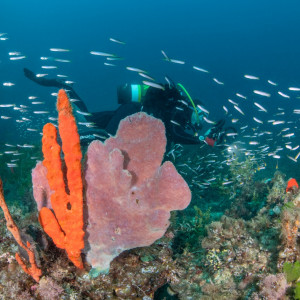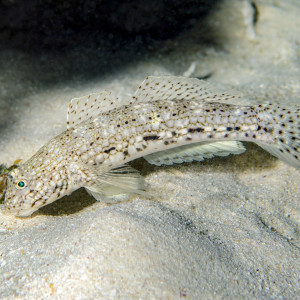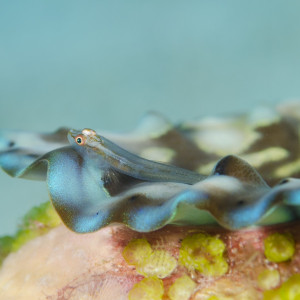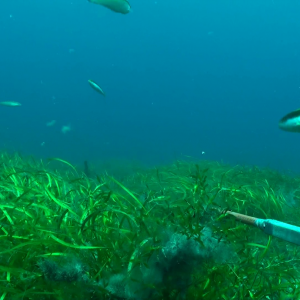Clouds of temperate reef fishes drift over the sponge gardens in Geographe Marine Park.
 by Rick Stuart-Smith
by Rick Stuart-SmithIstigobius decoratus, known as the Decorated Sandgoby is found on sand patches near reefs.
 by Ian Shaw
by Ian ShawPleurosicya mossambica also known as the toothy goby or the Mozambique ghost goby is found on many substrates, including corals, sponges, giant clams and seaweeds, and can vary colour according to the substrate.
 by Ian Shaw
by Ian ShawThis image shows a seagrass bed in the Geograph Bay Marine Park, captured from a BRUVS survey. The seagrass beds of Geographe Bay are one of the largest meadows recorded in Australia, extending into water depths of up to 50 metres. Globally, seagrasses are believed to be the third most valuable ecosystem in the world. Seagrass beds prevent erosion of the sea bottom, reduce carbon dioxide out of the atmosphere and support diverse communities of marine animals such as invertebrates, fish, crabs, turtles, mammals and birds by providing food and shelter. Seagrasses enhance overall marine biodiversity and provide ecological functions and a variety of services to humans.
 by Curtin University - Fish Ecology Laboratory
by Curtin University - Fish Ecology Laboratory



